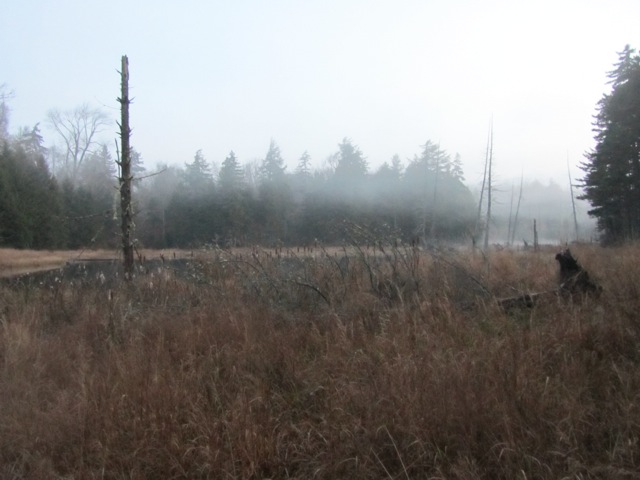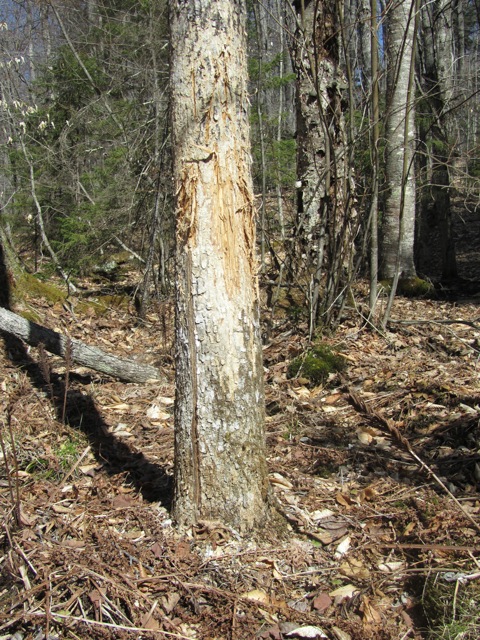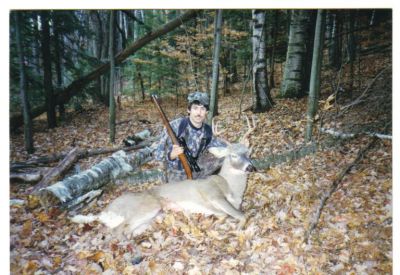
I had gone many miles and hoped to find something that caught my attention. Just like so many other hunters, I was putting the miles on in hopes of stacking information in my memory to draw from in the years to come.
Across one stream, over the next mountain, weaving around the numerous beaver ponds in the lowlands, I never gave up. With every step, I could feel success hidden throughout the landscape in front of me. Then, looking at my watch, I knew I had to begin cutting back toward the road. Hopefully, I would make it to my truck before it got dark. There weren’t any buds on the trees yet, so getting lost in the springtime jungle was the last thing on my mind. With hints of winter still in the forest, it was only a matter of time before summer would overtake the short spring.
The sun was barely visible above the mountain in front of me, but it lit up a tree in the swamp I had to cross to get back to familiar territory. Looking closer, I noticed the tree had been shredded by a buck’s antlers. It was the only promising sign I had found all day, and the sign was good enough to make be return the next fall.

Every year, I see people posting on social media about their spring scouting. It always amazes me that people are usually in areas that they normally hunt. The sign seen in the spring is the same sign that was there at the end of the season. Why do so many people waste time in the same areas they regularly hunt when they could be making much better use of their time?
I use spring to explore areas that interest me. I’ll put on as many miles as possible to get a good idea about what went on there during the season. It’s easy to see if a few big deer inhabit an area if you cover enough ground. You will find rubs, scrapes, runways and beds, providing you get into the areas that are most likely to support those types of sign.
Another thing that many people do in the spring that takes away from the purpose of the outing is to just go for a walk without storing the information they come across. People begin wandering all over the place without studying the land in front of them like they’re preparing for a test.
If you don’t study the topics that will appear on the test, your chance of getting an A becomes slim. To kill mature bucks regularly, you have to put in the efforts needed to ace the test. You might not always put a big buck on the ground, but your studies will usually present you with opportunities that others don’t get. Very rarely will you get an A for effort when it comes to chasing big bucks. A lot of people put in a lot of effort and come up empty-handed. You need to find the areas where big bucks work, then figure out what draws them there. You might not kill them in those spots, but you could find a hidden gem over the next hill or in the next bowl. There could be a stream crossing that funnels him to that spot, but the funnel could be more than 200 yards away.
Your eyes and gut instinct will become essential to figuring these things out. You must trust both of them. I’ve hunted with many people who tell me they never have a gut feeling. That’s not a good thing when it comes to deer hunting. Don’t create a gut feeling but listen to what your mind tells you when you wake up every morning. Your gut will almost always be right when it comes to making a choice.
This spring, instead of aimlessly wandering around the places you normally hunt, try spread your wings and explore many areas. You might end up never going back to your “old faithful” hunting area — or you might find a handful of places that can produce big bucks. Never waste time while scouting. Good luck this spring. Hopefully, you’ll find a few new places or learn some new things about areas where you have hunted in the past. You probably won’t learn much if you’re scouting an area you’ve hunted for a number of years. After three years in an area, you should have things figured out well enough to score regularly.
I learned this lesson when I was a young chap. I was 20 years old, the I killed this buck. Although he does’t have a big rack, he was a heavy, mature deer. He dressed out at 170 pounds, a great Adirondack deer. He just didn’t have the genetics to have good antlers. He was a 4 1/2 year old deer. I found the area in the spring, and I killed him during the so-called October lull the next fall.

Sign is easier to find when you’re looking for it instead of hunting.
Tony, that is definitely true. I guess it all depends on your methods of hunting, too. I know when I cover a lot of ground while hunting, I mentally note all of the sign I encounter. Being a sitter, I might be more observant of stuff like that.